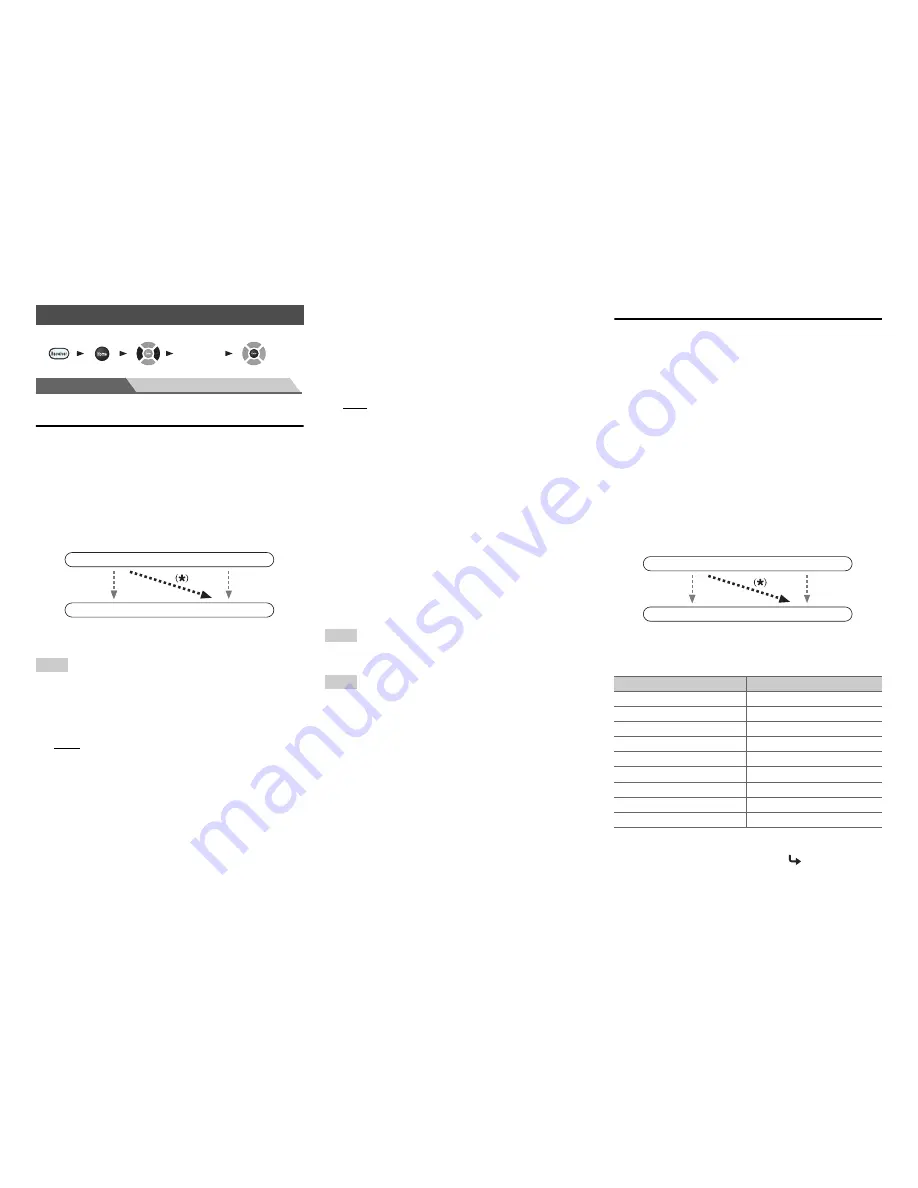
Advanced Operations
En-50
Main Menu
Input/Output Assign
Monitor Out
On the “
Monitor Out
” settings, you can select whether or
not to have the video sources’ images output through the
HDMI output.
If you connect your TV to HDMI output, “
Monitor Out
”
setting is automatically set and composite video and
component video sources are upconverted
*
and output.
Note
• See “Video Connection Formats” (
➔
page 89
) for charts
showing how the “
Monitor Out
” and “
Resolution
” settings
affect the video signal flow through the AV receiver.
■
Monitor Out
`
Main
:
Select this if your TV is connected to
HDMI OUT
MAIN
.
`
Sub
:
Select this if your TV is connected to
HDMI OUT
SUB
.
`
Both
:
Select this if your TVs are connected to
HDMI OUT
MAIN
and
HDMI OUT SUB
. Video signals are
output from both HDMI outputs at the resolution
supported by both TVs.
■
Resolution
`
Through
:
Select this to pass video through the AV receiver at
the same resolution and with no conversion.
`
Auto
:
Select this to have the AV receiver automatically
convert video at resolutions supported by your TV.
`
480p
(
480p/576p
),
720p
,
1080i
,
1080p
:
Select the desired output resolution.
`
1080p/24
:
Select this for 1080p output at 24 frames per second.
`
4K Upscaling
:
Select this for an output resolution four times that of
1080p. Depending on the resolution supported by
your TV, it will result in either 3840 × 2160 or 4096
× 2160 pixels.
You can specify the output resolution for
HDMI OUT
MAIN
and have the AV receiver upconvert the picture
resolution as necessary to match the resolution supported
by your TV.
Tip
• You can see the picture by pressing
Enter
to check the
“
Resolution
” setting (excluding
NET
input source).
Note
• Depending on the incoming video signal, the video playback may
not be smooth or the vertical resolution may be lowered. In this
case select anything other than “
1080p/24
”.
• With some TVs, there may be no picture when this setting is set
to “
4K Upscaling
”.
• If the “
Monitor Out
” setting is set to “
Sub
”, this setting is fixed
to “
Through
”.
• If the “
Monitor Out
” setting is set to “
Both
”, this setting is fixed
to “
Auto
”.
HDMI Input
If you connect a video component to an HDMI input, you
must assign that input to an input selector. For example, if
you connect your Blu-ray Disc/DVD player to
HDMI IN 2
,
you must assign “
HDMI2
” to the “
BD/DVD
” input
selector.
If you’ve connected your TV to the AV receiver with an
HDMI cable, composite video and component video
sources can be upconverted
*
and output by the HDMI
output. You can set this for each input selector by selecting
the “
- - - - -
” option, but the video signal coming from the
HDMI output depends on the assignments of “
Component
Video Input
” and “
Composite Video Input
”. See “Video
Connection Formats” for more information on video signal
flow and upconversion (
➔
page 89
).
Here are the default assignments.
Input/Output Assign
1
2
3
4
5
“
Setup
”
IN
OUT
Composite video,
component video
HDMI
HDMI
Composite video,
component video
Input selector
Default assignment
BD/DVD
HDMI1
CBL/SAT
HDMI2
STB/DVR
HDMI3
GAME
HDMI4
PC
HDMI5
AUX
FRONT
(Fixed)
TV/CD
- - - - -
EXTRA1
- - - - -
EXTRA2
- - - - -
IN
OUT
Composite video,
component video
HDMI
HDMI
Composite video,
component video
To be continued
















































